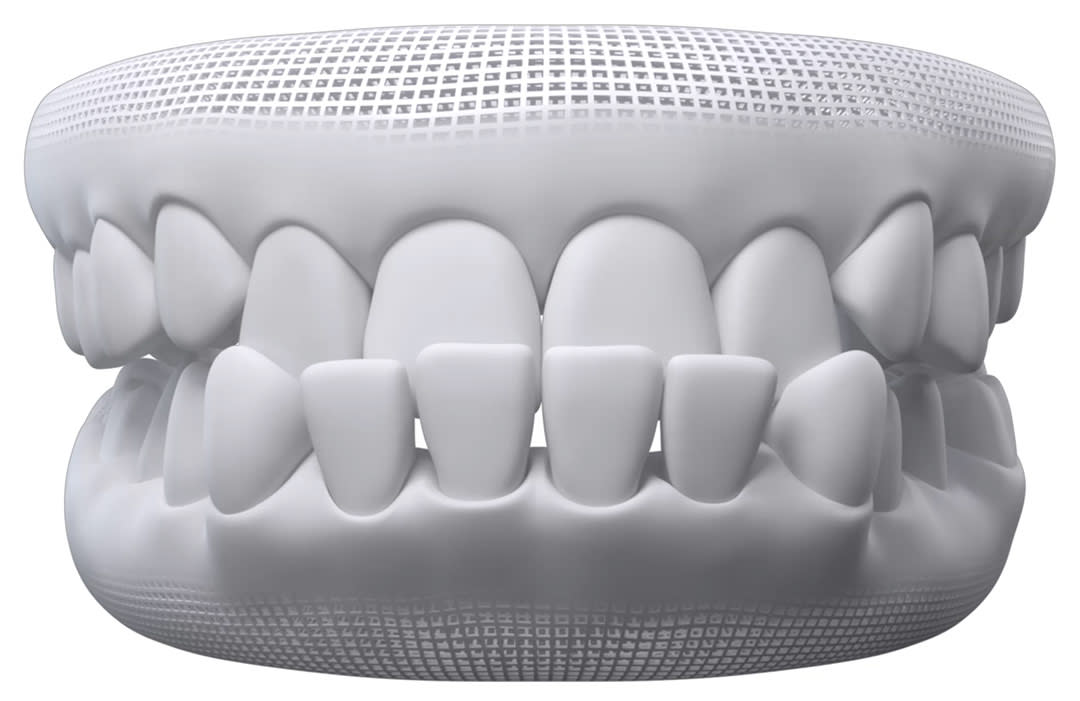If you’ve noticed that your bottom teeth sit in front of your top teeth when you bite down, you might be wondering if you have an underbite. You’re not alone - an underbite is a fairly common dental issue, and it doesn’t just affect how your smile looks. It can also impact your oral health, comfort, and even confidence.
The good news? Underbites can be treated in a variety of ways, and modern solutions are more effective and discreet than ever.
In this article, we’ll break down everything you need to know about underbites: what causes them, how to tell if you have one, and the different treatment options. Whether you’re just starting to explore what an underbite means or you’re thinking about underbite treatment, this guide will give you the insights you need to make an informed decision.
What is an underbite and how severe can it be?
Definition of underbite
An underbite is a type of dental misalignment where the lower front teeth protrude ahead of the upper front teeth when the jaws are closed. In an ideal bite, the upper teeth slightly overlap the lower teeth, but in an underbite, the opposite occurs1. This condition is also known in orthodontic terms as a Class III malocclusion.
In practical terms, someone with an underbite might appear to have a protruding lower jaw or a “strong chin” profile, as the chin and lower jaw sit forward of where they typically would2.
How severe can an underbite be?
Underbites can vary in severity:
Mild underbite: The misalignment may be subtle - so subtle that it’s almost unnoticeable at a casual glance.
Severe underbite: The lower jaw juts out prominently and is visibly noticeable. In these cases, the underbite can significantly alter the facial appearance and profile, sometimes leading to self-consciousness about one’s looks3.
You might wonder: are underbites common? While they aren’t extremely prevalent, they do affect a notable percentage of the population. In the UK, the prevalence of Class III malocclusion (underbite) is around 3.2%4. This includes both minor underbites that don’t cause trouble and more pronounced cases that may lead to functional issues or require treatment1.
Signs and symptoms of an underbite
Underbites aren’t just about appearance - they can also cause a variety of symptoms and functional difficulties. If you suspect you have an underbite, here are some signs and symptoms to look for:
Visible teeth misalignment. The clearest sign is that the lower front teeth overlap in front of the upper front teeth when you bite down normally. You may notice your lower row of teeth sticking out whenever you close your mouth. This can give the appearance of a protruding lower jaw or chin. Profile photos or mirrors can help you see if your lower jaw is set forward relative to your upper jaw.
Difficulty biting and chewing. An underbite can make it hard to bite food using your front teeth. You might find that your upper and lower teeth don’t meet properly, which can cause trouble chewing food efficiently or tearing food with your front teeth. Some people adjust their chewing patterns or jaw position unconsciously to compensate, which can strain the jaw muscles over time.
Speech or breathing issues. Because the jaw and teeth are not aligned as expected, some individuals with underbite experience slight speech difficulties - for example, certain words might be harder to pronounce or there may be a subtle lisp. It’s not very common, but it can happen in more pronounced cases5. Additionally, an underbite can contribute to mouth breathing or snoring. The misaligned jaw position may make it more comfortable to rest with the mouth open, leading to habitual mouth breathing1.
Jaw discomfort or TMJ pain. An underbite puts extra stress on the temporomandibular joints (TMJ) - the hinges connecting your jaw to your skull. Many underbite sufferers report jaw pain or fatigue, especially after chewing tough foods or talking for a long time. You might feel a tightness in the jaw, hear clicking or popping sounds, or even experience occasional locking of the jaw joint. Underbites have been linked to higher risk of TMJ disorders1, which can lead to headaches, earaches, or facial pain in some cases.
Biting the cheeks or lips. Because the lower teeth are forward, you might inadvertently bite the inside of your cheeks or lower lip more often when eating or speaking1. The misaligned bite can cause these painful accidental bites.
Excessive tooth wear and dental problems. A misaligned bite means your teeth don’t come together in the balanced way they should. This can lead to certain teeth rubbing or hitting each other abnormally. Over years, that can cause wear and tear on tooth enamel, chipping or cracking of teeth, and increased risk of tooth decay and cavities1.
Keep in mind that mild underbites may not cause any noticeable pain or functional problems - you might only observe the alignment issue.
Severe underbites, on the other hand, are more likely to lead to multiple of the issues above. If you’re experiencing any of these symptoms and suspect an underbite, it’s wise to consult a dentist or orthodontist.
Want to know if you have an underbite?
You can find the right doctor in your city by clicking the button below to access our Doctor Locator tool.


